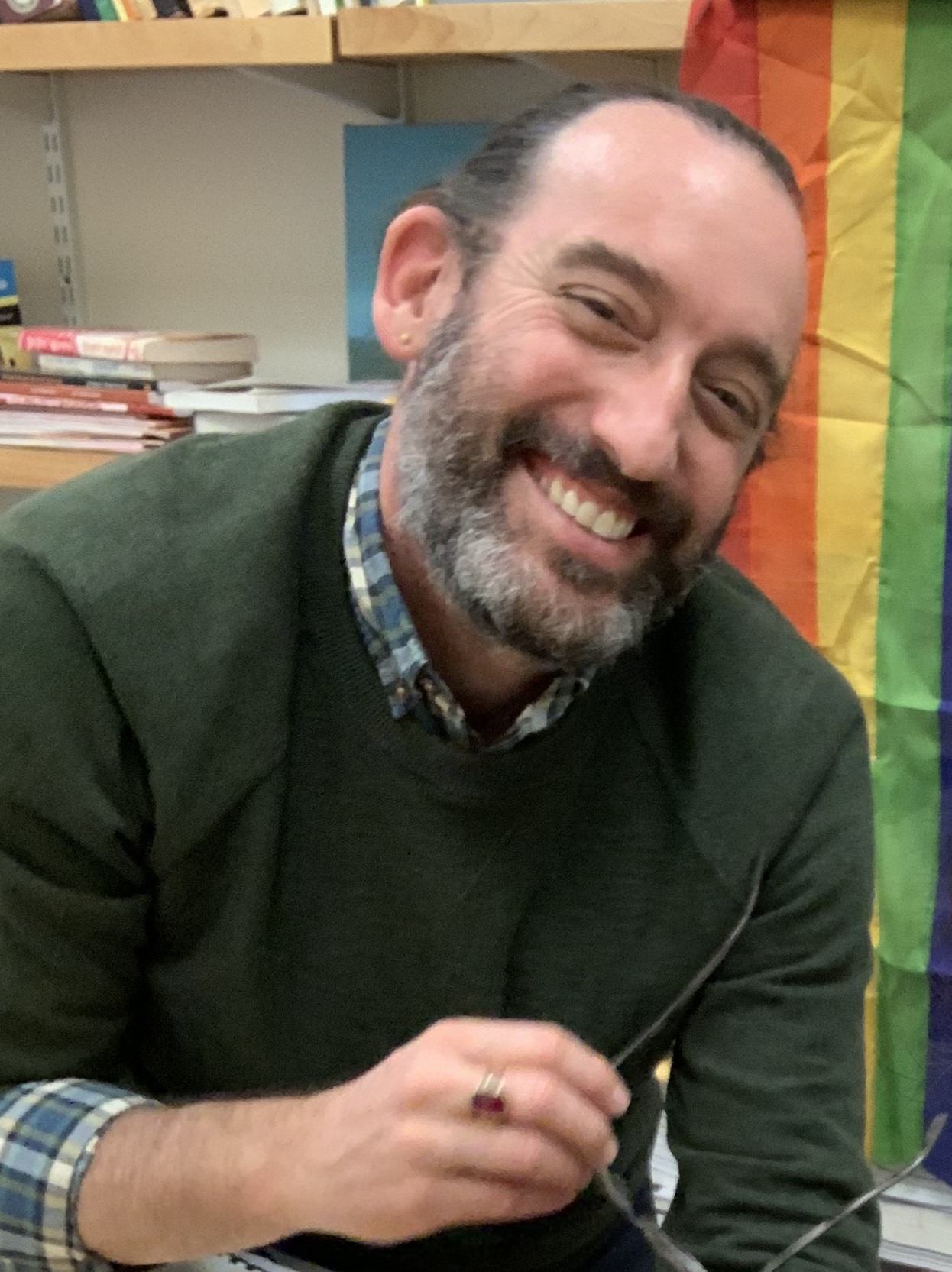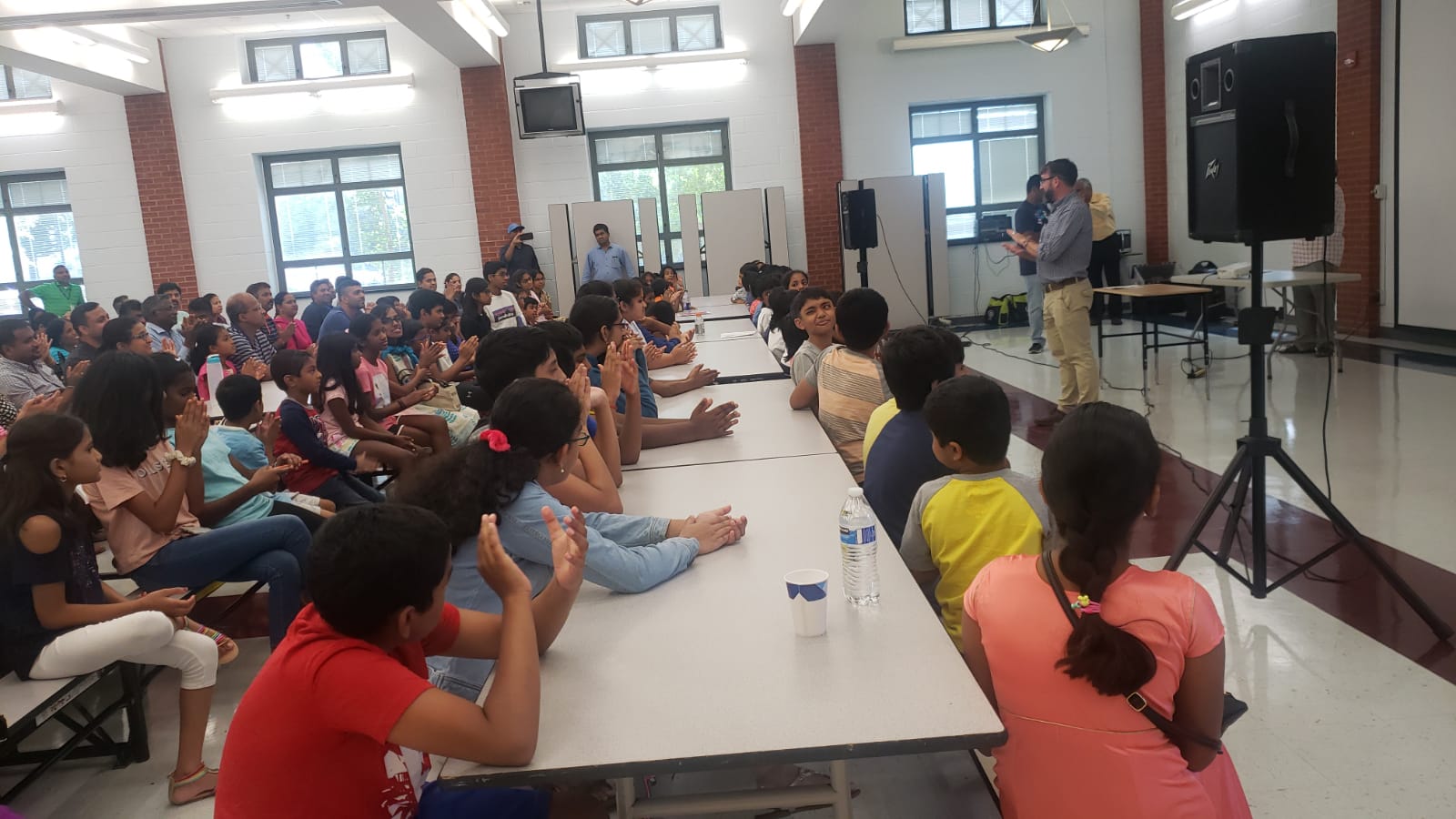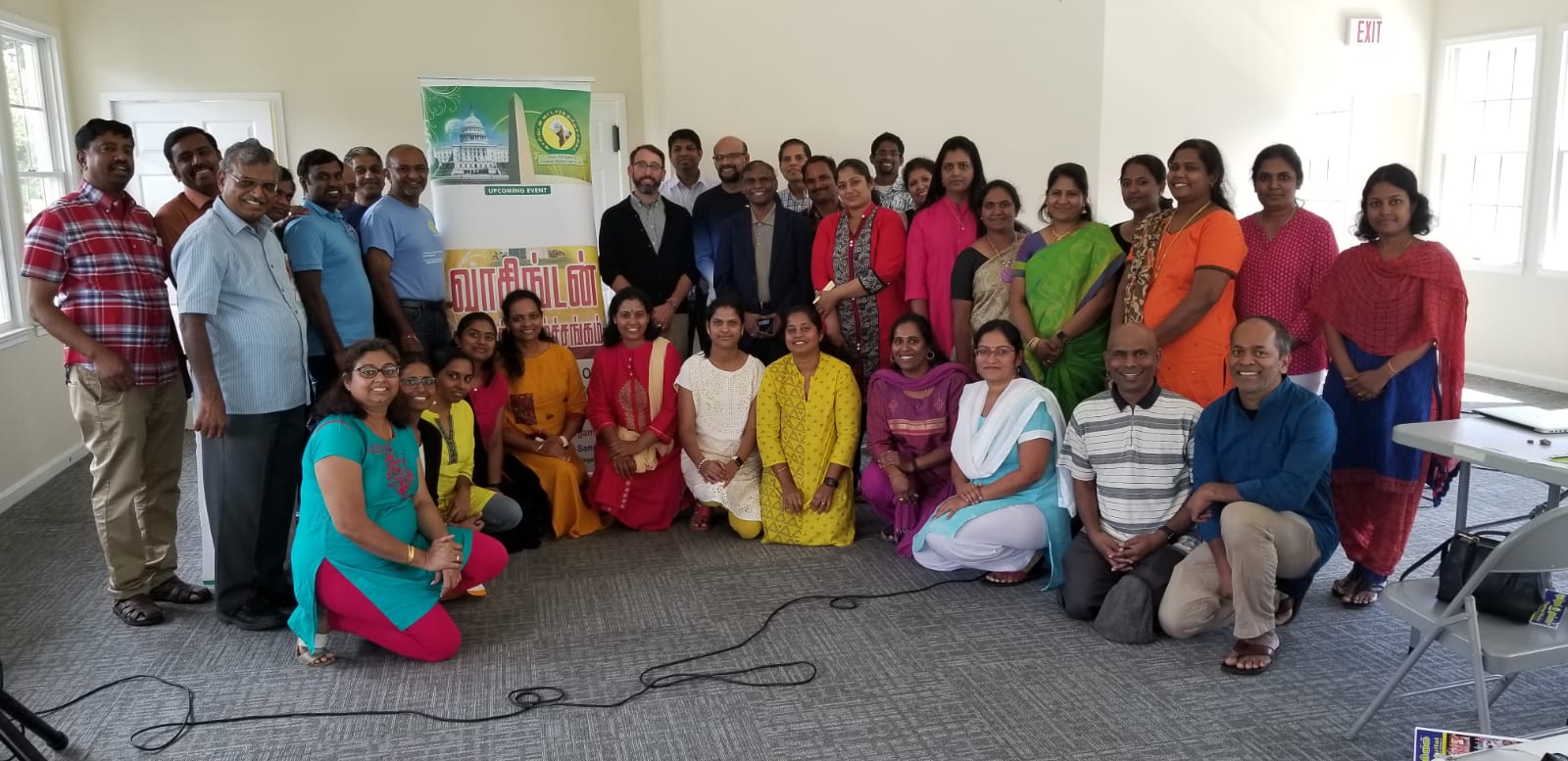Jonathan Ripley, Preceptor, has been teaching the Tamil language at Harvard University since 2012. Tamil, one of the longest-surviving classical languages of India, is offered as a class to Harvard students, faculty and staff. We spoke to Jonathan about his language learners, and his own journey with Tamil.
Mittal Institute: How did you first become interested in Tamil? Where did you learn the language, and what about the it captivates you?
Jonathan Ripley: My interest in South Asia began during high school, where I made close Gujarati-American friends. I began attending garba/raas celebrations with them during Navratri and ate delicious meals at their homes. Their friendship expanded my worldview, and I became intent on traveling to India, saving summer job money for the trip. Despite my efforts, I didn’t go to India until after college, when I received an Oberlin Shansi Fellowship to live and teach for two years in Madurai, Tamil Nadu. Before leaving, I studied Tamil for an intensive summer at the University of Wisconsin, Madison, which was the beginning of my journey learning Tamil. I continued my Tamil studies in India and then later at the University of Chicago.

Jonathan Ripley, Tamil preceptor.
Mittal Institute: Roughly how many Tamil language learners do you instruct, and why is it so important that Harvard offer instruction in Tamil?
Jonathan Ripley: Tamil class size depends on the year. A typical Elementary Tamil class at Harvard has anywhere between 5 – 10 students, with fewer in the intermediate and advanced levels. My students include undergraduates, graduate students, and faculty and staff. I would like to see our enrollment numbers increase because Tamil is such a rich and wonderful language worthy of our time and attention.
Despite holding official classical language status, and despite having over 75 million speakers worldwide, Tamil has been historically disproportionately undertaught, understudied, and underfunded. It is critical that Harvard offer Tamil instruction not just because it is an important language to learn, but also to send a message to other institutions of Tamil’s worthiness as a site of academic inquiry.
It is critical that Harvard offer Tamil instruction not just because it is an important language to learn, but also to send a message to other institutions of Tamil’s worthiness as a site of academic inquiry.
Currently, thanks to an extensive global grassroots fundraising campaign led by Tamil communities, Harvard now has an endowed chair in Tamil studies, Dr. Martha Selby, Sangam Professor of South Asian Studies. Having a professorship dedicated to Tamil increases opportunities for students to delve more deeply into their Tamil studies, and to explore the many topics yet to be researched in Tamil literature and socio-political history. In addition to making more teaching and learning opportunities like these available, we also need to create more opportunities for academic exchange between Tamil students and scholars in South Asia and the United States.
Mittal Institute: In addition to teaching at Harvard, you have also led training sessions at other U.S. schools. Can you share more about that?
Jonathan Ripley: I was actively involved in fundraising for the Harvard Tamil chair, and through that work had the opportunity to connect with Tamil communities across North America. I learned about the existence of volunteer-run weekend Tamil language schools all over the country, where thousands of students study Tamil each year. Some of these schools have successfully advocated with local school committees to allow students to get academic credit for their Tamil language work. This is important because it incentivizes children to stick with their Tamil education at an early age.
I was interested in the schools and their volunteer-focused, grassroots model, and so became more involved. In collaboration with school administrators, I designed and led teacher trainings in a number of these schools, as most teachers are parents with no formal training in teaching Tamil. The trainings covered a range of topics, including grammatical themes such as verb conjugation, as well as more general themes, such as how to design a curriculum that retains student attention and interest, and how to approach teaching Tamil’s distinct written and spoken forms. I am inspired by the dedication of the Tamil school teachers, who were very interested in learning new teaching techniques, as well as by the students who spend a good portion of their weekend studying Tamil. I have also taught summer students at University of Wisconsin, Madison, where I first began studying Tamil, as well as Shansi Fellowship recipients from Oberlin College.


In addition to instructing Tamil at Harvard, Jonathan Ripley conducts teacher training sessions globally.
Mittal Institute: You often travel to Tamil Nadu—where Tamil is the official language—to do some work in public health and human rights. What does this work entail?
Jonathan Ripley: Between graduate school and teaching at Harvard I worked for seven years in the non-profit sector in India on human rights-based approaches to HIV/AIDS prevention in LGBTQ+ communities. I have kept my involvement with this work alive on a volunteer basis by helping grassroots organizations with project design, grant writing, and documentation.
I am especially interested in finding ways to bring this work into my Tamil teaching at Harvard. This winter, Revathi, a Tamil activist and artist, was recently in town for a conference. I arranged for her to lead an interactive session with my Tamil classes about her current theater project, an autobiographical monologue called Vellai Mozhi that describes her journey as a transgender woman in India. My advanced students had read some of Revathi’s writings before she came, which made the session even more meaningful. Working with non-profits in India has enriched my language skills, kept my Tamil studies grounded, and has also allowed me to enhance my course syllabus with content that is relevant and interesting.
Mittal Institute: What might you say to those students or community members interested in taking a Tamil course?

Jonathan Ripley, left, with Revathi, a Tamil activist and artist.
Jonathan Ripley: Tamil is an underappreciated treasure and learning opportunities are few and far between, so I encourage people to take advantage of this rare learning opportunity at Harvard while they can. Studying Tamil provides students access to a treasure trove of literature that literally spans millennia, and a view into a region of South Asia with a fascinating socio-political and linguistic history.
Tamil is an underappreciated treasure and learning opportunities are few and far between, so I encourage people to take advantage of this rare learning opportunity at Harvard while they can.
Harvard offers introductory, intermediate, and advanced Tamil classes, and I teach both the colloquial and written forms of the language in tandem. Whether you have some Tamil or are a complete beginner, we can find a place of you in one of our classes. Classes are small and highly interactive and focus on cultural topics as well as grammar. After one year of Tamil study, students leave with a comprehensive understanding of Tamil grammar, the ability to read and write in the formal language and speak in the colloquial language, and a more nuanced understanding of Tamil culture. Harvard offers a language citation in Tamil as well.
This article is the fourth in a new series on South Asian languages at Harvard. Follow this series #SouthAsia@Harvard on Mittal’s Instagram and Twitter accounts. Read our first article on Hindi-Urdu language learners; our second on Sanskrit; and our third on Tamil scholar Martha Selby.
